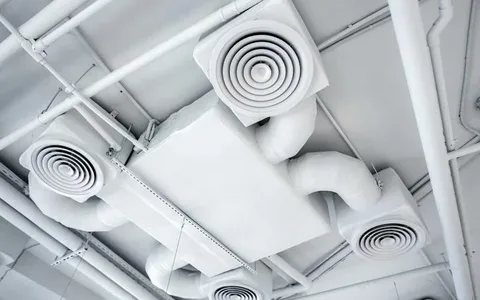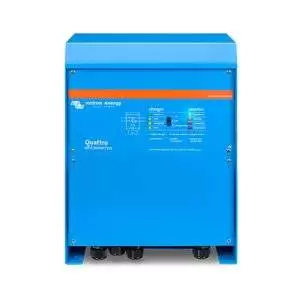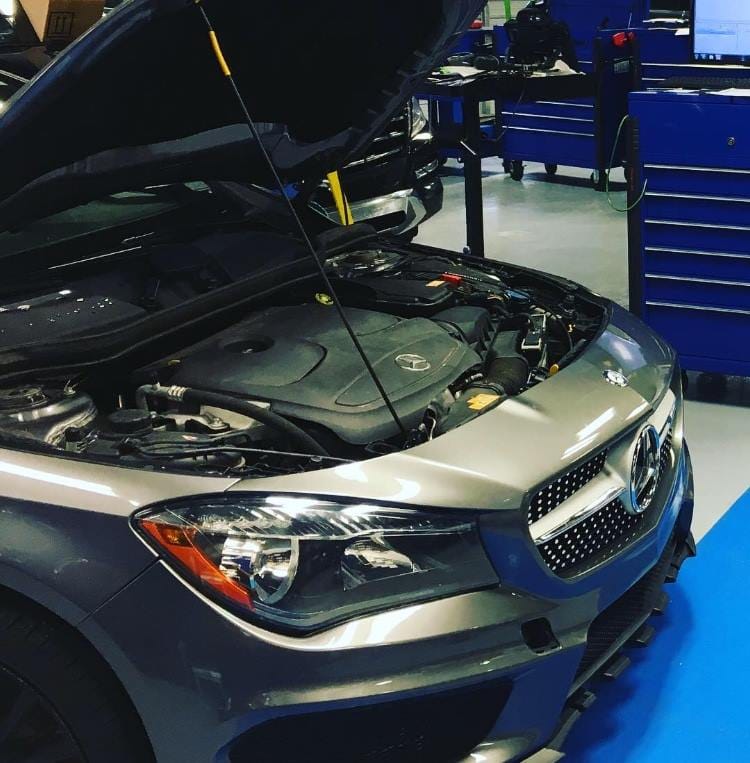Welcome to the world of fresh air! Have you ever walked into a stuffy room and felt the need to crack a window? That’s your body begging for good ventilation system, and it’s not just about comfort—it’s essential for your health. In this blog post, “Ventilation Systems 101: How They Work and Why You Need One,” we’ll dive deep into the fascinating mechanics behind ventilation systems that keep our homes and workplaces feeling fresh, clean, and breathable. Whether you’re building your dream home or looking to improve indoor air quality in an existing space, understanding how these systems function can make all the difference.
Introduction to Ventilation Systems
Imagine walking into a home or building that feels stuffy and stagnant. The air is heavy, and you can almost see the dust particles floating around. Now picture a space where fresh air flows freely, keeping everyone comfortable and healthy. This stark difference often comes down to one crucial element: ventilation systems.
Ventilation plays a vital role in maintaining indoor air quality. It’s not just about temperature control; it’s about creating an environment where people can thrive. Whether living in a cozy apartment or managing a bustling office space, proper ventilation is essential for well-being.
Understanding how ventilation systems work can empower you to make informed decisions for your home or business. Let’s dive deeper into what these systems are all about—how they function, their types, benefits, and why investing in one could improve everything!
The Importance of Proper Ventilation in Homes and Buildings
Proper ventilation is crucial for maintaining a healthy indoor environment. It helps to control humidity levels, preventing the growth of mould and mildew. This not only protects your property but also safeguards your health.
Without effective air circulation, harmful pollutants can accumulate indoors. Dust, allergens, and volatile organic compounds (VOCs) may linger in the air you breathe daily. Poor air quality can lead to respiratory and other health problems.
Additionally, adequate ventilation enhances comfort in living spaces. Stale or stuffy rooms can be uncomfortable and impact productivity at home or work. A well-ventilated area feels fresher, making it more inviting for family members or employees.
Investing in proper ventilation systems ensures that fresh air enters while stale air exits efficiently. This balance contributes significantly to overall well-being and optimizes energy efficiency throughout your space.
How a Ventilation System Works
Ventilation systems are designed to manage the flow of air in a space. They function by pulling stale air out while bringing fresh air in. This exchange is crucial for maintaining a healthy indoor environment.
Fans and ducts play a key role in mechanical systems. These components actively move air throughout the building. Depending on specific needs, the system can be set up to either exhaust contaminated air or supply clean outdoor air.
Natural ventilation relies on openings like windows and vents. It harnesses wind pressure and temperature differences to create airflow without mechanical assistance. Both methods aim to reduce moisture levels, eliminate pollutants, and regulate temperature. Properly functioning systems balance comfort with health benefits—ensuring spaces feel as good as they look.
Types of Ventilation Systems (Natural vs. Mechanical)
Ventilation systems can be categorized into two primary types: natural and mechanical.
Natural ventilation relies on air movement through windows, doors, and vents. It harnesses wind and thermal differences to circulate fresh air indoors. This method is energy-efficient but depends heavily on outdoor conditions.
On the other hand, mechanical ventilation uses fans or blowers to actively control airflow. This system ensures consistent ventilation regardless of external weather factors. It’s especially beneficial in tightly sealed structures where natural airflow might be insufficient.
Choosing between these options often hinges on your building’s design, climate, and specific needs. Both have merits, making it essential to assess which best aligns with your environment for optimal indoor air quality.
Benefits of Installing a Ventilation System
Installing a ventilation system offers numerous advantages that significantly enhance indoor air quality. One of the primary benefits is reducing humidity levels, which helps prevent mold growth and protects your home’s structure.
Additionally, proper ventilation minimizes harmful pollutants like dust, smoke, and volatile organic compounds (VOCs), creating a healthier living environment for you and your family.
Energy efficiency is another key advantage. A well-designed system can help regulate temperature, reducing the need for excessive heating or cooling. As a result, you may notice lower energy bills over time.
Moreover, adequate ventilation improves comfort by ensuring fresh air circulation throughout the space and eliminating unpleasant odours trapped indoors. Investing in a quality ventilation setup contributes to overall wellness by promoting better respiratory health while enhancing productivity at home or work.
Factors to Consider When Choosing an Energy Recovery Ventilator
Energy recovery ventilator (ERVs) has become essential in modern ventilation systems. They improve indoor air quality and help reduce energy costs. However, with the variety of available options, it can be overwhelming to choose the right ERV for your home or building. Therefore, it is important to consider several factors before making a decision.
1. Indoor Air Quality Needs:
The first and foremost factor to consider when choosing an ERV is your indoor air quality needs. An ERV’s purpose is to bring fresh outdoor air into your space while simultaneously removing stale indoor air. If you live in an area with high pollution levels or have family members with respiratory issues, you may need a higher level of filtration and purification in your ERV.
2. Size and Capacity:
ERV units come in different sizes and capacities, depending on the size of your space and the number of occupants. Ensuring that your chosen unit has sufficient capacity to provide adequate ventilation for your entire home or building is crucial.
3. Energy Efficiency:
One of the main benefits of having an ERV is its ability to recover heat or coolness from outgoing air and use it to condition incoming air, resulting in significant energy savings. When selecting an ERV, look for units with high energy efficiency ratings, such as Energy Star certification.
4. Climate Considerations:
Different climates require different types of ventilation systems. For example, areas with hot summers and cold winters will benefit from a different type of ERV than those with mild temperatures year-round. It is important to consider the climate conditions where you live when choosing an ERV.
5. Noise Levels:
Some people are sensitive to noise levels and may find certain ventilation systems too loud or disruptive for their liking. If this concerns you, look for models that operate quietly without compromising performance.
6. Budget:
While investing in a high-quality energy recovery ventilator can bring long-term energy savings, it is important to consider your budget. ERV units range in price, so it is essential to clearly understand your budget and what features are necessary for your specific needs.
Choosing the right energy recovery ventilator requires careful consideration of indoor air quality needs, size and capacity, energy efficiency, climate considerations, noise levels, budget, and maintenance requirements. Considering these factors, you can make an informed decision that meets your ventilation needs while providing long-term benefits for your home or building.
Common Problems with Ventilation Systems and How to Prevent Them
Ventilation systems can encounter a range of issues that compromise their efficiency. Clogged filters are common problems, which can restrict airflow and increase energy costs. Regularly replacing or cleaning these filters helps maintain optimal performance. Another frequent issue is duct leaks. Leaky ducts allow conditioned air to escape, making your system work harder. Sealing these leaks ensures better airflow and energy savings.
Moisture buildup is also a concern in ventilation systems. Excess moisture can lead to mold growth, which can pose health risks. Installing dehumidifiers or ensuring proper drainage can effectively prevent this problem. Lastly, noise from the system might indicate mechanical wear or loose components. Addressing unusual sounds promptly with routine inspections will keep your system running smoothly and quietly for years.
Maintenance Tips for your Mechanical Ventilation System
A mechanical ventilation system in your home or office is essential for maintaining good indoor air quality and comfortable space. However, like any other home appliance, it requires regular maintenance to ensure optimal performance and longevity. This section will discuss some important maintenance tips for your mechanical ventilation system.
Regular Cleaning:
The first step in maintaining your mechanical ventilation system is to keep it clean. This includes cleaning or replacing filters, dusting off fans and vents, and removing any buildup of debris or dust from the unit itself. It is recommended that the filters be checked and cleaned every 2-3 months to avoid clogging and reduce strain on the system.
Check Fan Blades:
Over time, the fan blades in your mechanical ventilation system can accumulate dirt and grime, which can affect their efficiency. It is crucial to periodically inspect fan blades and clean them if necessary.
Lubricate Moving Parts:
Another essential maintenance tip is to lubricate all moving parts of your ventilation system regularly. This includes motors, bearings, pulleys, belts, etc., which may require oiling or greasing, depending on the manufacturer’s instructions.
Inspect Ductwork:
Ductwork plays a vital role in delivering fresh air throughout your space. Over time, it can develop cracks or leaks that compromise its effectiveness and allow pollutants to enter the system. Therefore, it is necessary to inspect the ducts for any damages regularly.
Interior Cleaning:
In addition to external maintenance of your mechanical ventilation system, it is crucial to pay attention to its interior components, such as heat exchangers, coils, fins, etc., which help regulate airflow within the unit. A professional HVAC technician should clean these components at least once a year.
Check Airflow:
Proper airflow through the ventilation system ensures efficient operation and prevents strain on its components. It is recommended that the airflow be checked periodically and that nothing obstructs it, such as furniture or other objects. Regular maintenance of your mechanical ventilation system is crucial for its efficiency and longevity. Following these tips can ensure a healthy and comfortable living environment for you and your family.
Conclusion
A quality ventilation system in your home or business is essential for several reasons. Proper ventilation ensures fresh air circulates throughout your space, helping reduce indoor pollutants and allergens. This is particularly important for those with allergies or respiratory issues. A well-ventilated environment contributes to a comfortable living and working atmosphere. It regulates temperature and humidity levels, preventing the growth of mould and mildew. Moreover, adequate airflow can enhance energy efficiency by reducing reliance on heating and cooling systems.
FAQs
Q: What is the purpose of a ventilation system?
A: The main purpose of a ventilation system is to circulate fresh outdoor air throughout your home or building while removing stale air, pollutants, and moisture. This helps to maintain comfortable and healthy indoor air quality.
Q: How does a ventilation system work?
A: Ventilation systems use fans and ducts to bring in outdoor air and exhaust stale indoor air. Depending on the type of system installed, these systems can be either natural or mechanical.
Q: What are the different types of ventilation systems?
A: There are four main types of ventilation systems – exhaust-only, supply-only, balanced, and heat recovery ventilators (HRVs) or energy recovery ventilators (ERVs). Each type operates differently but serves the same purpose of controlling indoor air quality.
| Related Business Listings |
| Contact Directory |
| Local Business Profiles |









